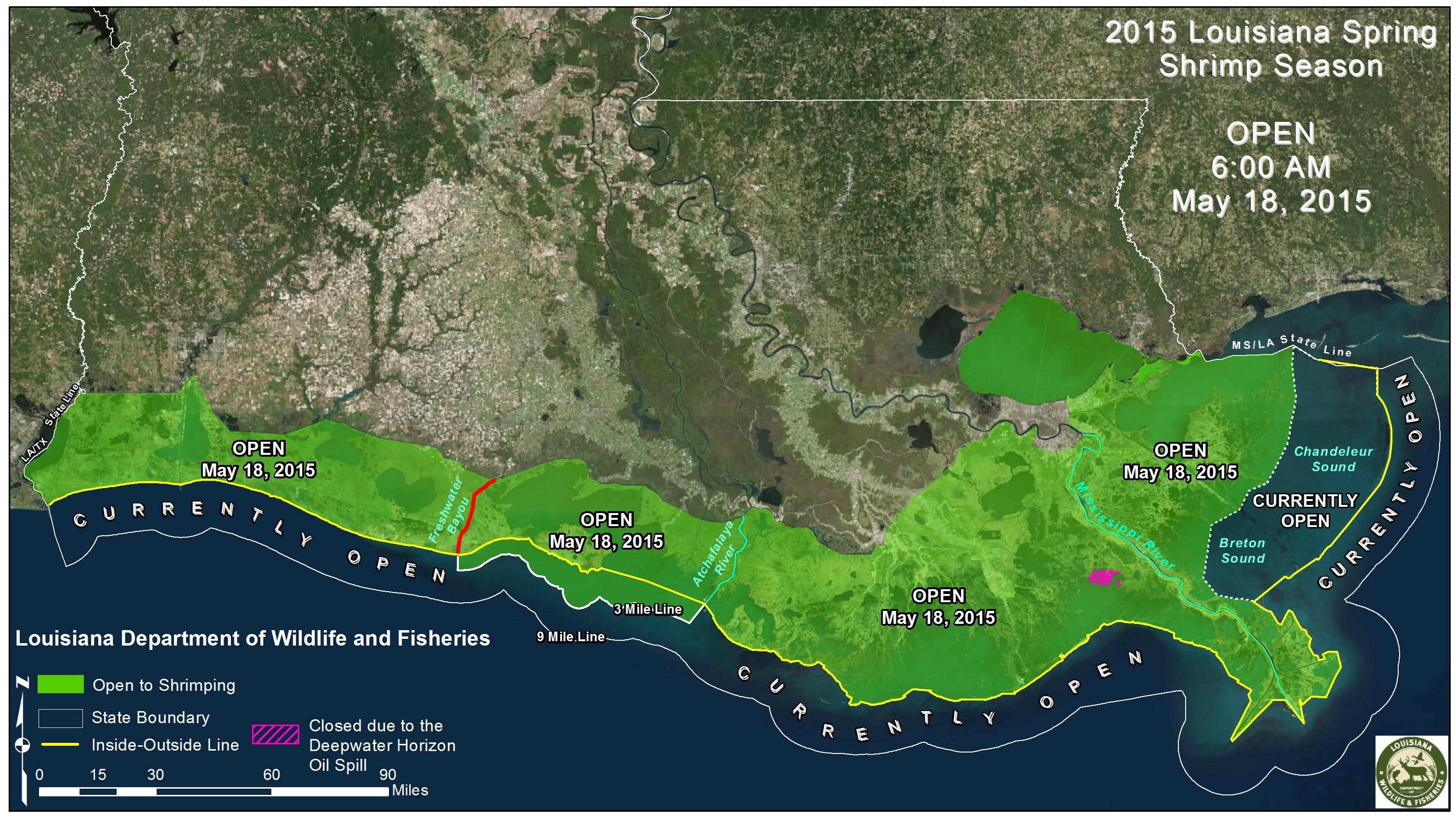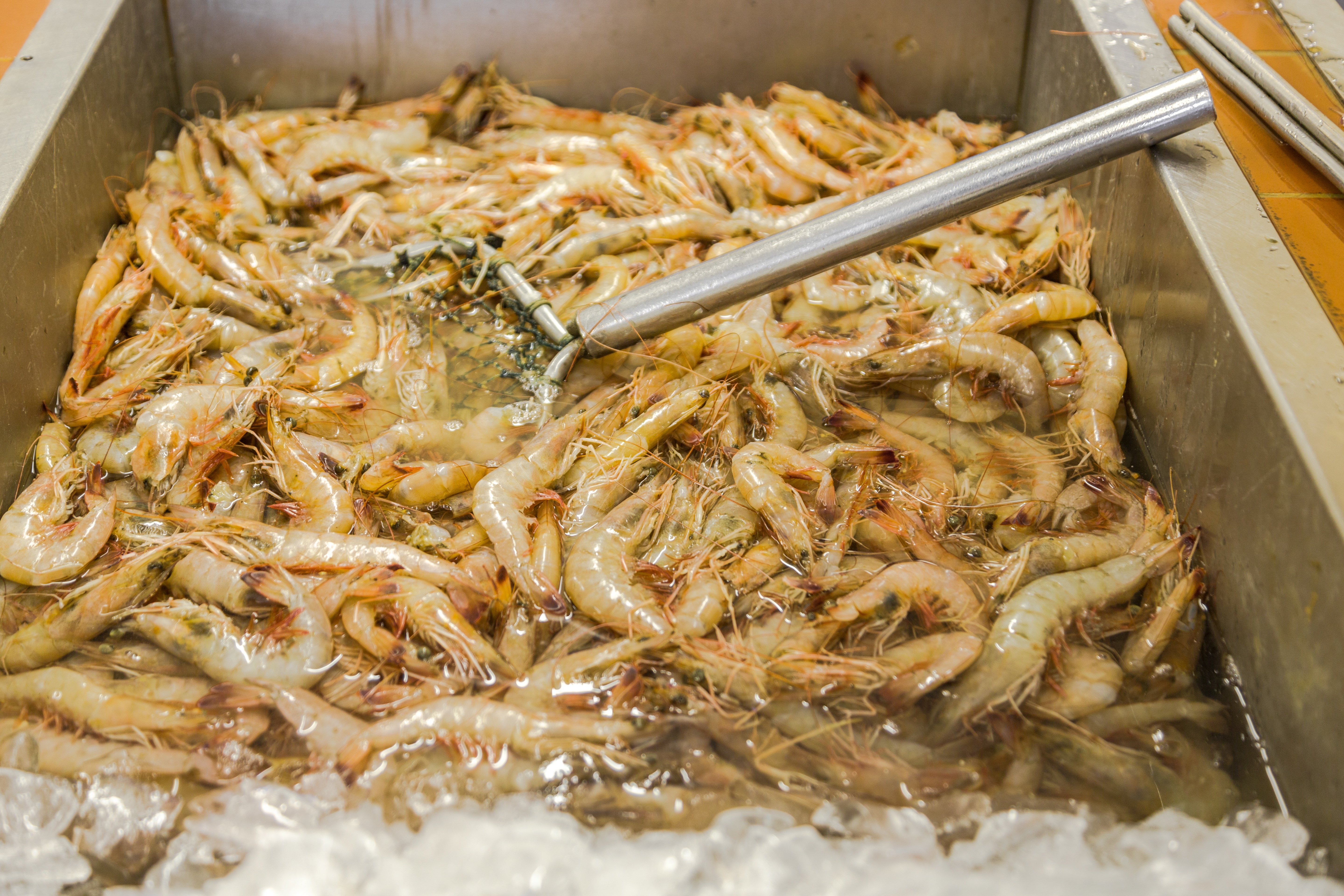So, what is it that makes a big plate of wild-caught, Louisiana Gulf Coast shrimp taste so darn good? Well, let me assure you, it’s more than just secret batter recipes and creole seasoning. There just so happens to be a science to it.
A Pinch Of Geography
For starters, based on the United States Geological Survey (USGS), the Louisiana Gulf Coast shoreline is a whopping 7,721 miles long. That’s a mere fraction less than Florida and longer than the coastlines of California and Maine combined. This makes for a lot of good fishing and boatloads of great shellfish – whether you’re in the mood for huge gulf shrimp, blue crabs, or oysters. But why is this span of shoreline so prime for producing much of the world’s best-tasting seafood? Well, that would be the type of waters you find along the Louisiana Gulf Coast.

Photo credit: Department of Louisiana Wildlife and Fisheries
A Dash Of Ecology
When you consider that estuaries account for roughly 75% of all U.S. commercial sea catches, their importance becomes fairly obvious. And, of all the contiguous states in America, Louisiana estuary marshes represent 37% of all such fishing waters and is home to the seventh largest estuary in the world. But these are not just any estuaries. According to some, the breeding grounds found along the Louisiana Gulf Coast are a biological orchestra. Combining the fresh waters of the Mississippi river and Atchafalaya Rivers with coastal tidal waters, the Louisiana shoreline contains a perfect mixture of brackish waters, shallow depths and high levels of nutrients, forming an ideal environment for microscopic marine organisms and a veritable breeding wonderland for delicious seafood.
Shake Up The Economy
If the brackish waters of the Louisiana Gulf Coast were ever in doubt for producing great seafood, a few stats will surely clear things up. Out of the 3.9 billion pounds of seafood that are landed in the U.S. each year, nearly a billion pounds are caught in the unique waters just off the Louisiana shoreline, while roughly 66% of seafood landed in the Gulf comes through Louisiana. And, did you know you can {{cta(‘c3e58ea0-611b-4ac8-bd84-c235b3dd3679’)}}?
According to the Gulf States Marine Fisheries Commission, Gulf Coast seafood is an economic engine that powers the entire region. In fact, the Gulf Coast produces 70 percent of the nation’s oysters, 69 percent of domestic shrimp, and is a leading producer of domestic hard and soft-shell blue crabs.
That says a mouthful!
{{cta(‘da101823-c512-4d4b-8e4c-c6611ee27a98′,’justifycenter’)}}
Serve With A Rich History
Deanie’s Seafood has a rich history of serving up great-tasting, wild-caught Louisiana Gulf Coast seafood and supporting sustainable fishing practices along the Louisiana shoreline and beyond. For more than 50 years, Deanie’s has been serving up fresh, Louisiana Gulf Coast shrimp in just about every possible way you can enjoy it. Fried, boiled, BBQ, in salads – you name it. And now it’s official. Deanie’s menu items proudly feature dishes with the states own Certified Authentic Louisiana Wild Seafood seal [http://certified.louisianaseafood.com/], adding our own special ingredients to an already delicious catch.
